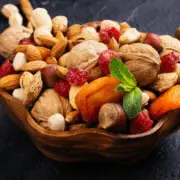How to Write A Metaphor
Writing a metaphor is the easiest thing you will ever do, but writing a good metaphor is another thing altogether. Anyone can compare two things; even an idiot baby produces a metaphor by jamming a square peg into a round hole. Yet this stupid stupid baby’s comparison falls flat. There is no allure to this dichotomy—no tact. A metaphor is just as much about what it conceals as what it reveals. A metaphor is a sexy banana that compels you to peel its rubbery fronds. This guide will provide you with a fundamental understanding of this banana and how to best undress it.
Semantic Burlesque
Before beginning the treacherous task of metaphor, you must understand the fundamental concepts behind this highest of literary arts. A good metaphor is sultry and shy. A good metaphor gives you a subtle wink and loosens the strap of its brassiere, but never removes it.
Ultimately, the art of the metaphor and the art of burlesque are one and the same. A metaphor is a sexy little secret that only you know. Your role as a writer is to dress your metaphor up in a tantalizing outfit that begs the question: “what might that voluptuous metaphor look like without that outfit on?” But, and this is the key to all literature, you must never allow the metaphor to brazenly bear its genitalia.
A Tantalizing Comparison
A well crafted metaphor begins with a well crafted comparison. Take for instance, the classic phrase, “a heart of gold.” This metaphor is absolute horseshit. It manages to only be marginally better than our foolish baby in that a heart and gold are at least two very different things, rather than a square peg and a round whole which are both obviously shapes. But this metaphor whips off its corset before the music has approached its denouement. It has forgotten its tassels backstage and its penis is improperly tucked. You must never be so sloppy.
A better comparison would be “a kidney of uranium.” I gave the creation of this metaphor just a moment’s thought and yet its overwhelming superiority is evident. You look at this metaphor and thirst for the knowledge of what lies beneath its garter belt. I don’t yet have an answer, but you should know by now that a metaphor is less about what is concealed rather than the concealing itself.
Sidebar on Similes
Similes are the subject of much literary controversy, and I am here to set the record definitively straight. A simile is simply a weaker version of a metaphor. If we continue to think of a metaphor as a strip tease, a simile is unabashed full frontal nudity. A simile wears no sheer robe. It beats no feathered fan tenderly around its nethers. There’s nothing wrong with a little dip into the pornographic, but this should be relegated solely to the scandal of an exposed shoulder or an overtly lustful glance. The allure of your signified genitalia loses all its luster when they are so brazen displayed. The occasional simile may wetten your audience’s loins, but too much and you risk a premature climax. Avoid similes altogether. A good writer never shows their hand so boldly. Instead, edge your readers by slowly unstripping a metaphor, giving just the hint of the salacious mystery beneath.
Mixing Metaphors
A writer must adopt the mentality of a post-war housewife expressing her stifled creativity through increasingly eccentric salads. There is no ingredient that does not belong. Each new metaphor is a leaf of romaine, a cherry tomato, a pound of Jell-O, eighteen hot dogs, or a handful of croutons. A lesser writer may remark that a mixed metaphor can only cause confusion, but this is coward’s talk and will quickly earn a jab to the throat. In the sexy salad of metaphor, each addition enhances the overall craft. If a reader finds this confusing, then they simply lack the erudition to properly appreciate your work.
In this essay alone I have referred to metaphors as bananas, burlesque, and salads. These metaphors may be mixed but they are done so with the tact of an expert sommelier crafting a rosé. Anyone who is unable to down an entire bottle of these mixed metaphors is too much of a lightweight to deserve a taste of such art.
In Conclusion
The world of metaphor is your oyster. An oyster clad in sheer lingerie and left to marinate in a salad dressing that is really just mayonnaise and salt. It is time to unlock your literary chastity belt. Go forth with your renewed sensuality and subtly imply to the world that you have genitals.

- About the Author
- Latest Posts
“Calen MacDonald is a 6’8″ tall writer and undergraduate student who does those things while being 6’8″. He first started writing when he wasn’t 6’8″, but that’s less important because he’s 6’8″ now. He’s also 6’8″.”














